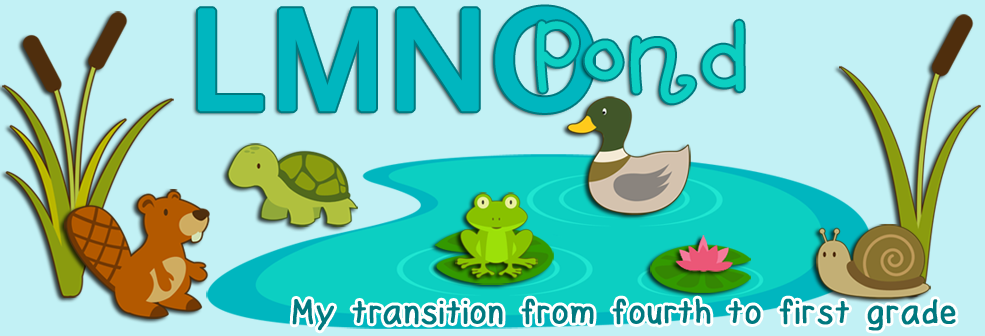Recently I saw an Instagram post about aiding a colorblind student. I had a suggestion on how to make accommodations easier. Then I had another suggestion. And another. Finally I realized, I have figured out quite a few tricks that have helped my colorblind first grader this year! So here are some practical tips for you if you learn you will have a colorblind student next year.
1. Accept some
pictures that are not colored the way you are used to. When you ask students to draw a picture of a
dog, don't feel obligated to ask your student what color they want and give
them the "right" crayon. They
will color the way they see it. Stepping
in and providing the "right" color will make them feel dependent
during an activity that you could be helping them feel self reliant. Accepting their perspective during "free
drawing/coloring" times will make them feel accepted and teach the rest of
your class that perspectives vary and that's not a bad thing.
2.  When color coding
is required, provide crayons with labels/wrappers on. Sometimes a color blind person will need to
color code for their audience. Teaching
your students to compensate in order to communicate their message effectively
is a life skill. As long
as your student can read color words, if you say "use red to underline the
nouns," they can participate. Be sure to hold back a set of fully wrapped crayons that you collect at the end of each activity so that you can provide them every time. If
your student can't read color words yet, differentiate for your student and make them a
priority during your sight word practice times.
Some will feel motivated to learn them.
When color coding
is required, provide crayons with labels/wrappers on. Sometimes a color blind person will need to
color code for their audience. Teaching
your students to compensate in order to communicate their message effectively
is a life skill. As long
as your student can read color words, if you say "use red to underline the
nouns," they can participate. Be sure to hold back a set of fully wrapped crayons that you collect at the end of each activity so that you can provide them every time. If
your student can't read color words yet, differentiate for your student and make them a
priority during your sight word practice times.
Some will feel motivated to learn them.
 When color coding
is required, provide crayons with labels/wrappers on. Sometimes a color blind person will need to
color code for their audience. Teaching
your students to compensate in order to communicate their message effectively
is a life skill. As long
as your student can read color words, if you say "use red to underline the
nouns," they can participate. Be sure to hold back a set of fully wrapped crayons that you collect at the end of each activity so that you can provide them every time. If
your student can't read color words yet, differentiate for your student and make them a
priority during your sight word practice times.
Some will feel motivated to learn them.
When color coding
is required, provide crayons with labels/wrappers on. Sometimes a color blind person will need to
color code for their audience. Teaching
your students to compensate in order to communicate their message effectively
is a life skill. As long
as your student can read color words, if you say "use red to underline the
nouns," they can participate. Be sure to hold back a set of fully wrapped crayons that you collect at the end of each activity so that you can provide them every time. If
your student can't read color words yet, differentiate for your student and make them a
priority during your sight word practice times.
Some will feel motivated to learn them.
3. When in doubt,
ask. You know those popular red and
yellow discs used for counting? I pulled
my student aside and asked, "Can you tell which one is red?" Turns out he could, so I didn't need to pull
out pattern blocks for him to count instead.
4. Modify how you
present color coded information. Here
are just a few examples of how I've done this.
My old anchor chart for numbers to 20 had red and green
circles in tens frames. The red were odd
and the green were even. This was
obviously not appropriate for my student, so I did create a new chart with him
in mind. If you have a chart that
alternates red and green, switch it out this year.
When we learn patterns in calendar, we use the Everyday
Counts series. Most of the
"figures" vary both in shape and color. I'm sure to always say the shape and sometimes the color as well when I refer
to this visual. When you teach patterns,
use shapes instead of relying on color.
When handing out two sets of ten pop cubes to work on
numbers to 20, be sure that your colorblind student has black and white, or
another set of colors that they can distinguish between.
When playing board games such as "Bump," be sure
your student can distinguish between the pieces. If using different colored round discs of the
same size doesn't work, player 1 could use discs while player 2 uses pennies,
triangular pattern blocks, pop cubes, or whatever other manipulatives you have
on hand.
Mark up items that you can't switch out. We use Fundations magnet letters for the
whole class that match the ones the students use. My colorblind student can't easily
distinguish between salmon (for vowels) and yellow (for consonants). By putting a tiny sticker on his vowels
as well as my whole class set, he could find his vowels as easily as his
peers. But next year the stickers can
come off if I don't have another student who needs them.
 Make sure your center materials have high contrast. If you print off activities in black and white and you can read it just fine, chances are your colorblind students can as well. My fact families page shown here has black and white visuals, making it perfect for colorblind and typical learners alike.
Make sure your center materials have high contrast. If you print off activities in black and white and you can read it just fine, chances are your colorblind students can as well. My fact families page shown here has black and white visuals, making it perfect for colorblind and typical learners alike.
 Make sure your center materials have high contrast. If you print off activities in black and white and you can read it just fine, chances are your colorblind students can as well. My fact families page shown here has black and white visuals, making it perfect for colorblind and typical learners alike.
Make sure your center materials have high contrast. If you print off activities in black and white and you can read it just fine, chances are your colorblind students can as well. My fact families page shown here has black and white visuals, making it perfect for colorblind and typical learners alike.
5. Remember that every individual with the same broad
disability is a unique individual. Some
things you should know about my student:
He's extremely laid back. He sees
his colorblindness as something that makes him different and interesting, and
he does not hesitate to let his peers know about it. He can read color words. He confuses red and green, as well as blue
and purple. His favorite color is
blue. He doesn't like to color
much. Learn what you can about your own student's strengths, weaknesses, likes,
dislikes, and motivation level so you know how to help them. Then share what you've learned and tried in the comment section below!
If you're interested in more activities like the one shown here, Teachers Pay Teachers (and I) are having a sale in honor of Teachers Appreciation Week. Remember to enter the code CELEBRATE on Tuesday and Wednesday. This sale announcement will disappear from this post following the sale.

 My Teachers Pay Teachers Store
My Teachers Pay Teachers Store
My Pinterest









